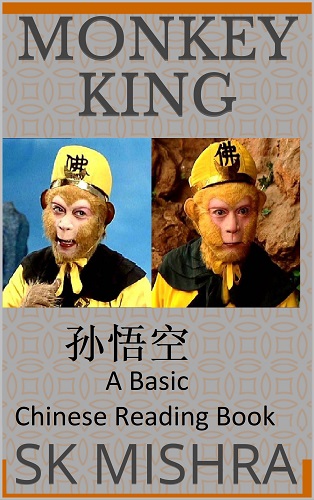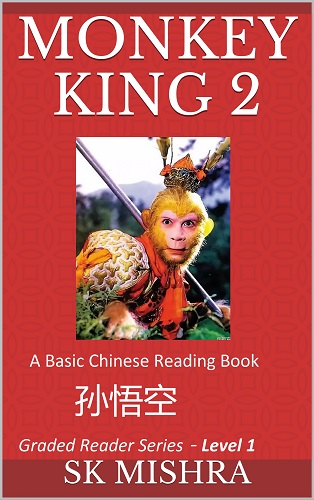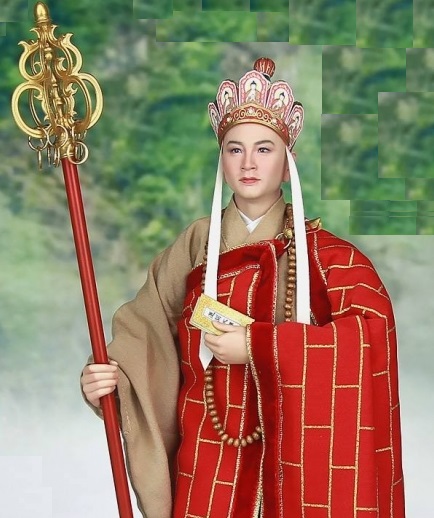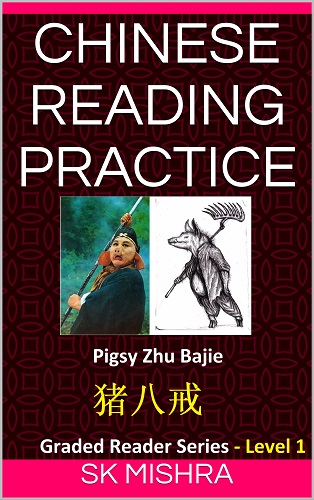Are you learning Mandarin Chinese? How many characters have you already managed to remember? Can you precisely recall various meanings of each and every (at least the elementary) characters? Do you find them very confusing? Well, many Chinese characters look damn similar and confusing. So, it wouldn’t a surprise if you feel lost in the sea of those mysterious characters. Fret not; every Chinese learner is faced with myriads of similar problems. In fact, when moved to the mainland China for a full-time job (I live in Suzhou); I was faced with the same issue: How to learn Chinese fast?
In my previous two blog-posts, I discussed learning Chinese characters and words efficiently (author’s home page.
If you have not read those two posts, here is the link, don’t forget to check them out as well. 🙂
Once you have gotten a basic sense of the Chinese characters and words, it’s time to start correlating those characters/words and form new words, sentences and phrases. Basically, the more you can analyze the characters, the better you can remember them.
Learn Chinese Language and Culture
Here are some of the related books/resources to learn Chinese language fast:
- Level 1: Chinese Reading Books (Chinese Elementary/Primary School Education Series)
- Level 1: Chinese Reading Books (Chinese Short Story Series, 500+ characters)
- Level 1: Chinese Reading Books (Journey to the West Series, 600 characters)
- Level 2: Chinese Reading Books (Biographies of China’s Famous Personalities, 600 characters)
- Level 2: Chinese Reading Books (Chinese Reading Comprehension, 600+ characters)
- Level 2: Chinese Reading Books (Chinese History Series, 900 characters)
- Level 3: Chinese Reading Books (Chinese Culture Series, 1000 characters)
- Level 4 & 5: Chinese Reading Books (Chinese Geography and Economy Series, over 1000 characters)
- Level 6: Chinese Reading Books (Chinese Classical Literature Masterpieces, about 1300 characters)
Also, one of the finest ways to remember complicated Chinese characters would be to do reading practice. To put it simply: Read Chinese books more and more. Read as many books as you can! The more books you are able to read (and understand, of course), the more you will able to memories the deeper meanings of the Chinese characters. However, do you know how to practice fast reading Chinese books? I’ll quickly give you some of my personal recommendations.
Well, one of the common issues with Chinese reading practice is: many books for learning Chinese may not be suitable for the beginners (Level 1). Obviously, these books may use thousands of characters (suitable for the natives). Moreover, it’d take more time to finish a thick book. Speaking from experience, some of the beginners feel like giving up learning Mandarin much before they even cross the Level 1. Don’t Do That! Don’t Be That Guy!
So, in this blog-post I’d recommend you some of the books to learn reading Chinese. These books are designed for the beginners (Level 1) and lower intermediate level Chinese learners (Level 2).
Well, before I provide you the list of books, I’ll share with you some interesting characteristic features of the books I am going to recommend. Here you go!
- These books are written in the story form, not to mention, each book would make an interesting read.
- Each book is written using only about 600-700 elementary simplified Chinese characters.
- 100% suitable for the beginners (L1/L2).
- Each chapter, built upon the characters introduced in the previous character (s), provides a few new characters.
- Only 5 to 10 simple chapters per book: you can set a realistic goal to finish reading the books (such as one chapter a day).
- There is a balanced flow of information from one chapter to another.
- For all the characters, the Pinyin is provided, so if you don’t recognize any character, you can look up the meanings using the pinyin.
- Looking at the pinyin, you can also learn Mandarin Chinese word formations.
- English translation of the text is purposely excluded. Well, this will enforce your brain to correlate the meaning of each character, and so, you will remember characters/words more efficiently.
- The books are based on Chinese cultural stories. So, by reading these books, you will also get to know the Chinese culture better.
- These books, designed for the reading practice, are all about Chinese history and culture. So, You will learn them more intuitively.
Alright! Next, I’ll provide you the names and other relevant details of the Chinese reading practice books. These are the books that I’d personally recommend to any Chinese learner. Just follow the links (images are also hyperlinked); you’ll discover more about the interesting Chinese reading books.
How to Practice Fast Reading Chinese Books?
Four Great Chinese beauties
Well, the book “Chinese Beauties” talks about the four Chinese women: Xi Shi, Wang Zhaojun, Diaochan, and Yang Guifei. These women lived in different eras, hundreds of years apart, however, there is something common about them: although they were very close to the ruling emperors and their actions often brought down the empires, their own lives rather ended up in tragedies or mysteries. Since these women played crucial roles in the Chinese history, they are often collectively referred as the four most beautiful women in ancient China. Check out the book for further details:
- Paperback: Four Great Chinese Beauties (四大美女)
- Kindle (eBook version- Four Great Chinese Beauties (四大美女)).
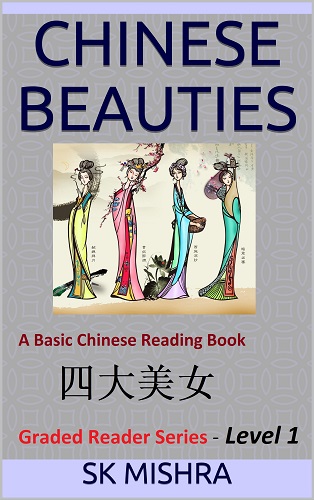
The book has only five Chapters. See how fast you can finish reading the entire book. 🙂
Journey to the West (西游记)
Tang Sanzang (唐三藏, 602 AD-664 AD), a famous Chinese Buddhist monk, went to the West (西天, Western Heaven, poetic Chinese name for the ancient India) to bring the Buddhist scriptures to China. The main reason behind his journey was the prevailing discontent among the Chinese Buddhist scholars regarding the inaccuracies of Buddhist teachings in the mainland. The monks felt that the teaching of Buddha, as taught in China in those days, were not reflecting what Buddha exactly had preached. Therefore, there was a growing desire to follow the genuine Buddhist scriptures, which was expected to be only available in India. Tang Sanzang spent about two decades travelling to and from India before he was finally back to China with the Buddhist scriptures. Tang Sanzang himself recorded his travelling experiences in his book Great Tang Records on the Western Regions (大唐西域记).
Novel Journey to the West
- Paperback (ISBN 9798887341293): Amazon
- Paperback (ISBN 9798887341293): Barnes & Noble
Inspired by the work of Tang Sanzang, Wu Cheng’en (1505-1582), a Chinese novelist and poet of the Ming Dynasty, wrote the novel Journey to the West, about 900 years after the long trip of Tang Sanzang (do you get a sense of how old is Chinese history?). In his acclaimed novel, Wu Cheng’en used his imaginary powers to describe the troubles faced by Tang Sanzang during his trip to India. In the novel, Wu Cheng’en added many mythological monsters, who were portrayed as disturbing Tang Sanzang all along his journey. There were about 81 difficulties faced by Tang Sanzang.

Tang Monk
- Paperback (ISBN 9798887341286): Amazon – Tang Tang Monk Xuanzang/Tang Sanzhang (Folk Story of Tang Sanzhang, 唐三藏),
- Paperback (ISBN 9798887341286): Barnes & Noble
However, Tang Sanzang was accompanied by three disciples who helped him defeat those monsters. Sun Wukong was one of those disciples who had many supernatural powers to conquer the monsters. Zhu Bajie (English name Pigsy) was another disciple of Tang Sanzang.
Pigsy Zhu Bajie
Zhu Bajie is a funny character from the novel Journey to the West (西游记). He often faces challenges due to his love for food and lust for women. Moreover, he is quite a lazy person.
- Paperback (ISBN 9798887341279): Amazon
- Paperback (ISBN 9798887341279): Barnes & Noble
Monkey King
The book, divided in three parts, narrates the folk stories of Sun Wukong (孙悟空), the main character from the novel Journey to the West. The following books, Monkey King (1, 2 and 3), tells us the early life adventures of Sun Wukong. In particular, in the following books, you’ll learn the quest of Sun Wukong for immortality.
Monkey King 1
- Paperback (ISBN 9798887341248): Amazon
- Paperback (ISBN 9798887341248): Barnes & Noble
Monkey King 2
- Paperback (ISBN 9798887341255): Amazon
- Paperback (ISBN 9798887341255): Barnes & Noble
Monkey King 3
- Paperback (ISBN 9798887341262): Amazon
- Paperback (ISBN 9798887341262): Barnes & Noble
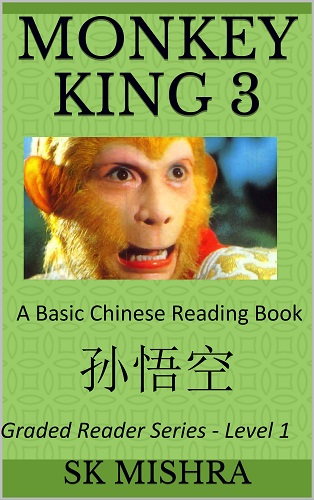
Chinese History Series (Level 2 Books)
Chinese history refers to the history of China from the birth of Chinese civilization (中华文明) to the present. The Xia period of Neolithic Erligang Culture (新石器时代二里岗文化) was already present by 2070 BC (approximately 4,100 years ago). The first unification of China took place in 221 BC under the Qin Dynasty (approximately 2240 years ago). As such, China has a very long history.
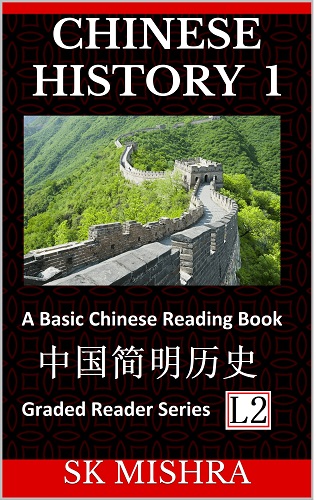
Here are the recommended book volumes to learn Chinese history while practicing Chinese reading.
Chinese History 1: Overview
The book, Chinese History 1, a Chinese reading practice book, presents a broad and simple overview of Chinese history.
- Paperback (ISBN 9798887340234): Barnes & Noble
- Paperback (ISBN 9798887340234): Amazon
You can find more Books for Level 2 learners on the following link:
- Chinese History Reading Practice Books (Level 2)
I will keep the list updated with new books.
To sum up, Mandarin Chinese is arguably one of the most difficult languages to learn. However, if you learn smartly, you can indeed learn Chinese much faster. Although the road to learning Chinese is certainly not an easy one, it’s absolutely worth it!
Once you have done enough reading practices, you will be able to read any random piece of Chinese manuscript.
That’s all in this post about How to Practice Fast Reading Chinese Books. If you have any question about learning Mandarin Chinese, traveling, living or working in China, do let me know in the comments! Feel free to post in our forum so that others could also contribute and learn. For regular updates like us on Facebook, or follow on Twitter!
If you find the write-ups useful, don’t forget to buy me a beer!
Wish you a great time learning Mandarin Chinese!
Cheers!
Last updated: Sunday, December 25, 2022
